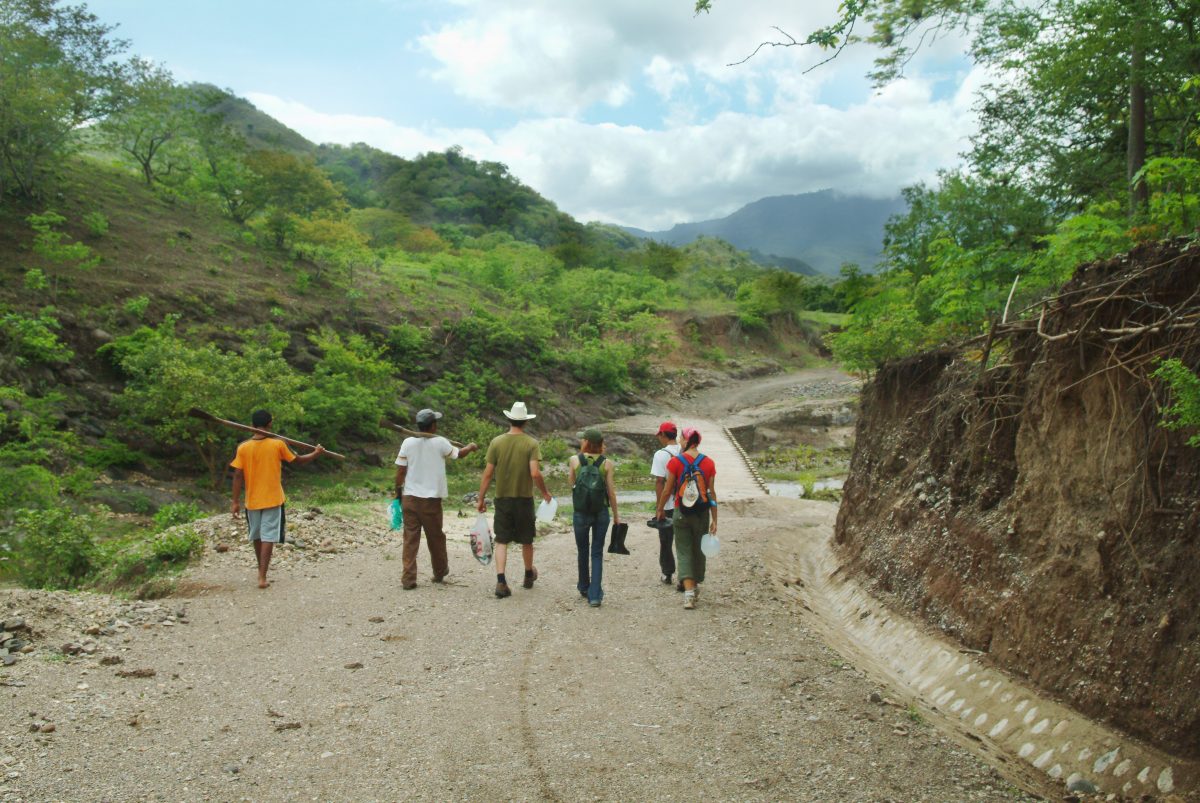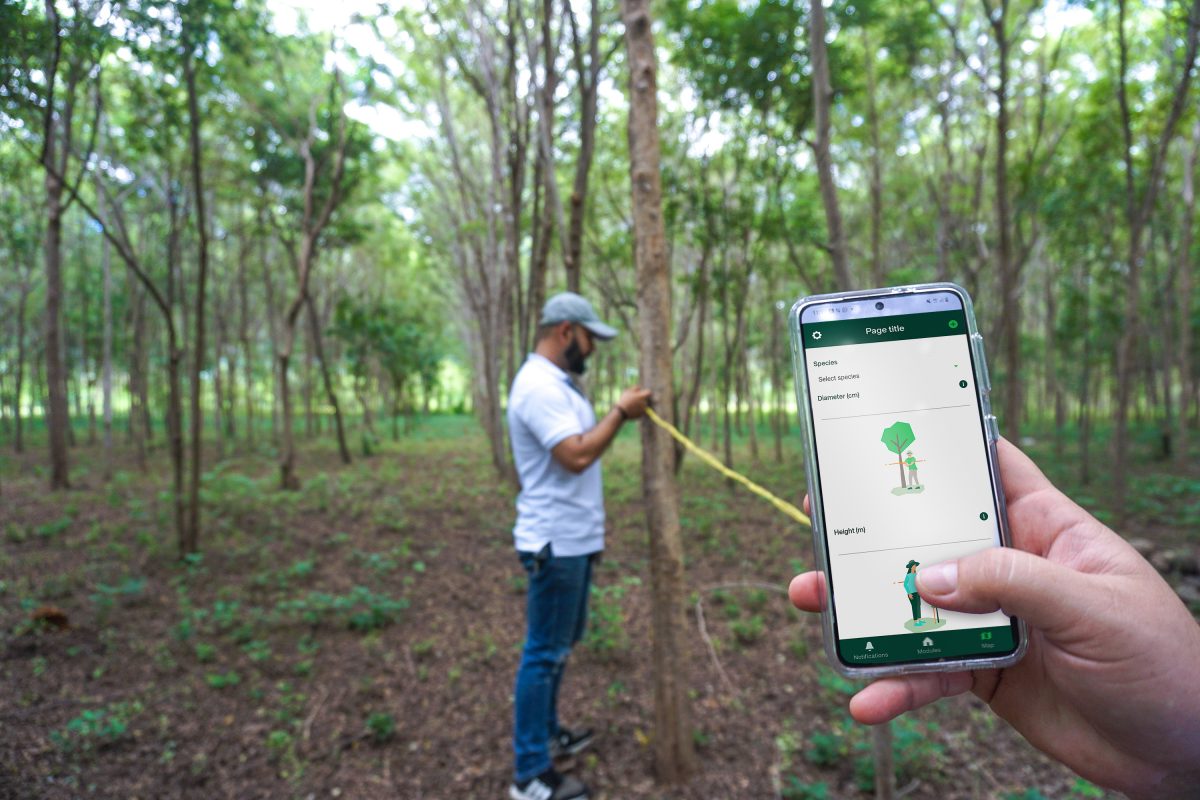We are so excited to reveal Taking Root’s new brand! It reflects how our organization has evolved since its founding 15 years ago. Though much has changed over the years, our belief in, and dedication to growing trees with smallholder farmers has remained steadfast. With the help of the rebrand agency Will Creative, we’ve built a brand to capture where we’ve come from, our essence as an organization, and our ambition to restore forests on a global scale.

The seed of an idea
Growing something “crazy”
To create our new brand, we had to get to the heart of our identity. This meant returning to our beginnings and reflecting on how we and the industry have changed over time. Taking Root began its journey in 2007 as a co-creation between a group of young people from Canada and Nicaragua with a shared vision of growing trees in a way that brought value to farmers through what eventually became known as the CommuniTree Carbon Program.

Funded through the sale of carbon the trees were removing from the atmosphere, the program started with a handful of farmers in San Juan de Limay. At the time, people thought the idea of selling carbon, let alone growing trees with smallholder farmers, was “crazy”. No one, including us, would have anticipated that the program would become the largest reforestation initiative in the country, supported by some of the world’s leading brands like Microsoft, Springer Nature, and DHL and representing a model now being replicated around the world.
Turning “crazy” into reality
Looking back, in many ways what we were trying to do was crazy. Successfully reforesting land across thousands of small, remote areas of land, all owned and managed by different people is a logistical nightmare. Not to mention, the challenge of generating the enormously time-consuming and complex reporting required by the market so that brands could make carbon claims with confidence.
The initial success of the CommuniTree program was down to its emphasis on community-led design and practices as well as our early funding partners to whom we are forever grateful to. However, it was clear that if we wanted to scale, we needed to embrace technology to overcome the logistical and reporting challenges we faced. We began building our own technology to help us and our partner, APRODEIN, manage and track the program’s on-the-ground logistics while automating the transparent and science-based reporting required by the market to create carbon removals. As we built our capacity, we started to see the long-term impacts of the program come to fruition, so we set our sights on how we could keep growing our impact. And at that point, the market exploded.

An opportunity for global impact
Historically, one of the biggest barriers to growing impact was convincing the market that growing trees was a good idea. However, in recent years, companies have been waking up to the risks the climate crisis poses and setting unprecedented commitments and investments into climate mitigation – most notably, natural climate solutions. As the market started to embrace natural climate solutions, the challenge shifted to how people could grow trees successfully at a massive scale. Increasingly, organizations began reaching out to us to help demystify and manage the complexities of building reforestation projects and accessing the carbon market. This represented a huge opportunity for us to create greater impact. We could replicate the model built through CommuniTree by providing our partners with the technology and support to access the carbon market by growing trees with smallholder farmers.
With all of these changes, our legacy identity struggled to keep up. It conveyed a small grassroots organization rather than an established company with years of experience and a cutting-edge technology solution being deployed with partners all over the world. It was time for an update!
Creating an identity to keep us rooted
As we looked inward to rediscover our identity, we sought to identify the overarching problem that we’ve been solving since our founding and that gets us up every day. We believe in the power of trees for what they can do for climate, but also what they can do for biodiversity, ecosystems, and livelihoods. And we need more of them. The world’s forests are disappearing at an alarming rate, and efforts to restore them are moving too slowly.
Our purpose is to accelerate the restoration of the world’s forests.
But this begs the question, why is the world not growing trees fast enough? For Taking Root, the answer is that people managing the land available for forest restoration see better land-use opportunities than to grow trees. If we truly wish for the world’s forests to be restored, people need to get more value from growing trees than other alternatives. A person’s livelihood will always be their priority, so we need to ensure that forests give them a better future.
Our theory of change is that the world’s forests will only be restored if people can improve their livelihoods by growing trees.
Our mission is to enable people to improve their livelihoods by growing trees.
What does that mean for our work?
Smallholder farmers in the tropics remain the focus of our work. The greatest area suitable for reforestation is on agricultural land owned and managed by the world’s 500 million family farmers. However, they cannot grow trees if it is at the expense of their livelihoods. Though trees can offer a lot of value to farmers, it is typically extremely challenging for them to access that value because of high barriers to entry.
Selling the carbon that trees remove from the atmosphere could unlock some of this value. But historically, farmers have not been able to access the carbon market because of the small and fragmented nature of their farms and the complex requirements of certifications and buyers. This is where Taking Root comes in. We enable farmers to create transparent and robust forest carbon removals.
To enable farmers to grow trees, we work with organizations that have existing smallholder reforestation projects. For a long time, APRODEIN was our sole reforestation partner, and we’re thrilled with what we’ve accomplished together. Now it’s time to build new partnerships. We need to grow trees faster, and it’s going to require a massive collaborative effort to get to the pace needed to solve the scale of the problem.
We provide our partners with the technology and support they need to build and scale their forest carbon projects with smallholder farmers.
A big decision that was made as part of our rebrand was to drop the name FARM-TRACE. This is a reflection of how our technology is an integral part of Taking Root’s model, alongside the support we provide, for our reforestation partners to create forest carbon removals with smallholder farmers. From now on we will refer to FARM-TRACE as Taking Root’s technology platform, made up of Taking Root’s mobile app and web app. All our services and functionality on the platform will remain the same but the platform will have an updated design to match our new brand including replacing the FARM-TRACE logo with the new Taking Root logo. Speaking of the new Taking Root logo…
A new look
We worked with the team at Will Creative to come up with a new visual identity that brought together our technology and ambition with people and impact. At the heart of this new identity was our logo. Our previous logo bore significant meaning for us, carrying us through 15 years and even being painted on the APRODEIN office building in Nicaragua. But we knew that it needed an update.

Our new logo was carefully designed to reflect different aspects of our work. Inspired by the shape of a tree, the arch was made to symbolize forest canopy. Our end goal is not to plant trees, it’s to grow them. Achieving canopy cover is a testament to that goal. The trunk was designed with upwards motion of growth, and the subtly integrated checkmark speaks to our technology’s verification of our work.
Other new & notable pieces of our visual identity include a website, an updated design for our web and mobile apps, and a refreshed digital presence. We believe that our visual overhaul speaks with clarity, boldness, and personality that will ultimately enable us to accelerate our impact going forward.
Building momentum for reforestation on a global scale
Taking Root is so excited for what’s to come. We are continuing to grow our team and are actively developing new projects with partners around the world, while expanding the CommuniTree Carbon Program. We are also continuing to build out our methodologies and technology platform to enable our partners to work with more farmers, get more trees in the ground and create more carbon removals.
We are only where we are today because of our partners, our staff and the farmers we work with. The impact that we’ve created and will continue to create together is what drives us forward. We’d also like to thank the team at Will Creative for helping us articulate and elevate our identity through our brand. Now, it’s time to accelerate the restoration of the world’s forests.